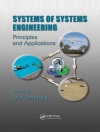Polymer nanocomposites revolutionized research in the composites area by achieving the nanoscale dispersion of the inorganic filler (clay platelets) in the polymer matrices after suitable surface modifications of the filler phase. A large number of polymer matrices were tried and nanocomposites with varying degrees of successes were achieved with these polymer systems. The majority of the synthesis are carried out by melt blending which frequently result in the full exfoliation of the filler. However, advanced techniques provide a number of advantages as compared to the melt blending and lead to more uniform composites with enhanced properties. There are a number of recent advances in these methods such as the use of reactive surfactants, modified initiators, advanced clay surface modifications, use of a variety of fillers, inverse polymerization, and miniemulsion polymerization methods which have further led the generation of advanced exfoliated nanocomposites. Until now, most of the published research has been scattered throughout the literature. This book provides a single comprehensive source of information about one of the most important facets of polymer nanocomposites technology: synthesis in emulsion and suspension. These polymerization methods lead to the generation of the well delaminated polymer nanocomposites with a wide range of polymer matrices. This book serves as both a professional reference for experienced researchers and a valuable text for newcomers to the field. It makes the reader aware of the potential commercial use of these recent developments.
Inhaltsverzeichnis
Chapter 1: Emulsion and suspension polymerization technology for nanocomposite synthesis;
Chapter 2: Use of reactive surfactant in emulsion for the nanocomposite synthesis;
Chaper 3: Role of clay surface modification for the nanocomposite generation;
Chapter 4: Effect of initiator nature on the emulsion and suspension polymerization;
Chapter 5: Polystyrene nanocomposites by intercalative emulsion and suspension;
Chapter 6: Layered silicate – PMMA nanocomposite particles;
Chapter 7: Nanocomposites of isobutylene, polypyrrole, polyaniline with layered silicates;
Chapter 8: Emulsion and suspension nanocomposites using magnesium hydroxide as filler;
Chapter 9: Inverse emulsion polymerization for the nanocomposite synthesis;
Chapter 10: Miniemulsion polymerization for the generation of nanocomposite particles
Über den Autor
Vikas Mittal received his degree in Chemical Engineering from the Punjab Technical University in India. He then went on to obtain his Master of Technology in Polymer Science and Engineering from the Indian Institute of Technology in Delhi, India. His doctorate on surface chemistry and polymer nanocomposites is from the Swiss Federal Institute of Technology in Zurich. He then worked at the Active and Intelligent Coatings section of the Sun Chemical Group, Europe in London on the development of water and solvent based coatings for food packaging applications. He is currently working as a Polymer Engineer at BASF Polymer Research in Germany where he is responsible for the physical analysis of organic and inorganic colloids.












